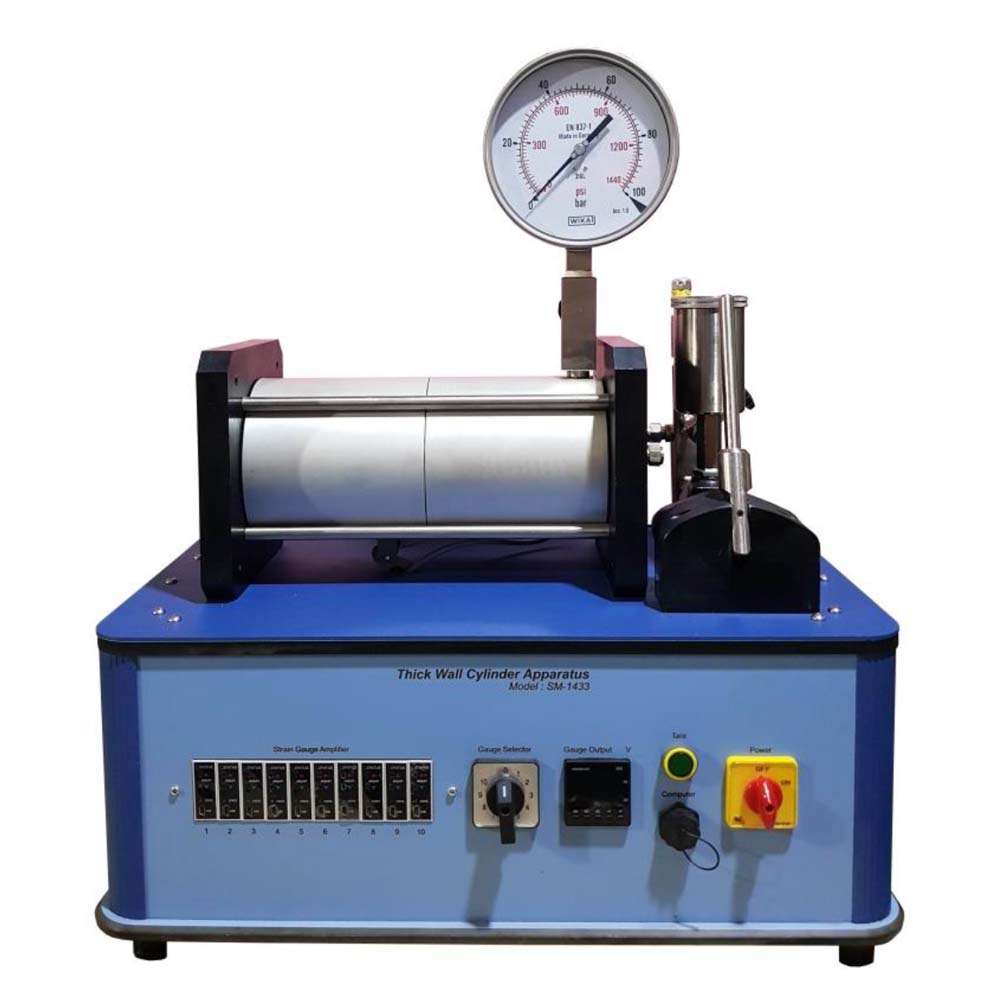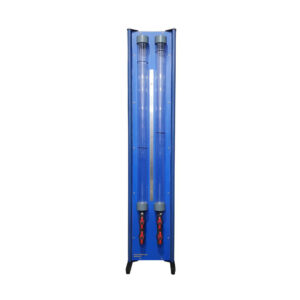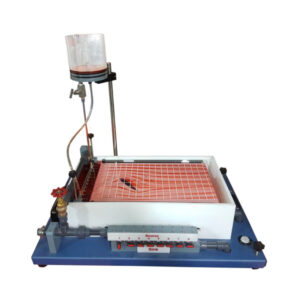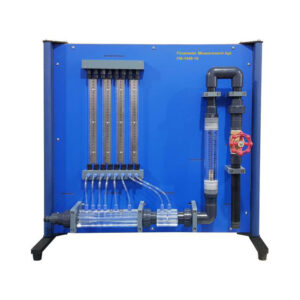When building thick-walled cylinders, as contrasted to thin-walled cylinders, consideration must be given to the uneven distribution of stresses throughout the wall’s thickness. Under internal pressure, a vessel with thick walls is in a triaxial stress condition. Radial, circumferential, and axial stresses and strains are experienced directly. Since strains within a vessel cannot be directly measured, strains on the surface are used to estimate internal stresses and strains. Electrical strains are measured using strain gauges, and the stresses and strains are calculated from those readings. When a thick-walled cylinder is subjected to internal pressure, the apparatus is used to explore the direct stresses and strains that result. The two-part, sealed oil-filled cylinder consists of two sections. With the help of a hydraulic cylinder and a spindle, internal pressure is produced inside the vessel. The internal pressure is displayed by a pressure gauge. Between the two parts of the cylinder, an eccentric groove is carved, in which the strain gauges are attached at various radial positions. On the inside and outside of the cylinder, additional strain gauges are placed. Measurements of radial, hoop, and axial strains provide for complete documentation of the strain state. The measuring amplifier readouts the measured values from the recorded signals. The measured values can be loaded into the application programme to aid in and facilitate visual evaluation of the experiment. The triaxial stress condition in the cylinder wall is graphically represented using Mohr’s Circle for stress and strain analysis. Using the proper elasticity equation, the measured strains are used to determine the direct stresses and strains. The comprehensive course materials outline the foundations and offer a step-by-step description of the experiments.
Experiments:
- Measurement of elongations by strain gauges.
- Application of Mohr’s Circle for the triaxial stress state.
- Determination of the distribution of direct stress in
* radial, tangential and axial direction - Investigation of correlations between elongation, pressure and stress in the triaxial stress state.
Specification:
- Investigation of the stresses and strains in a thick-walled cylinder under internal pressure.
- Two-part cylinder with flat groove.
- Strain gauge application at various radial points in the groove and on the cylinder surface.
- Hydraulic cylinder with spindle to generate pressure.
- Hermetically sealed hydraulic system, maintenance-free.




